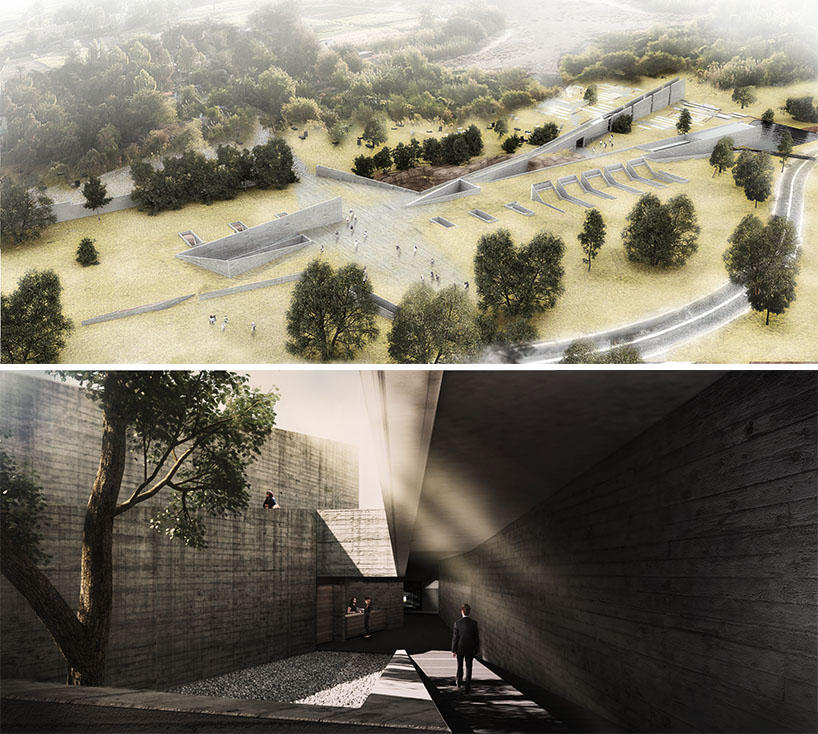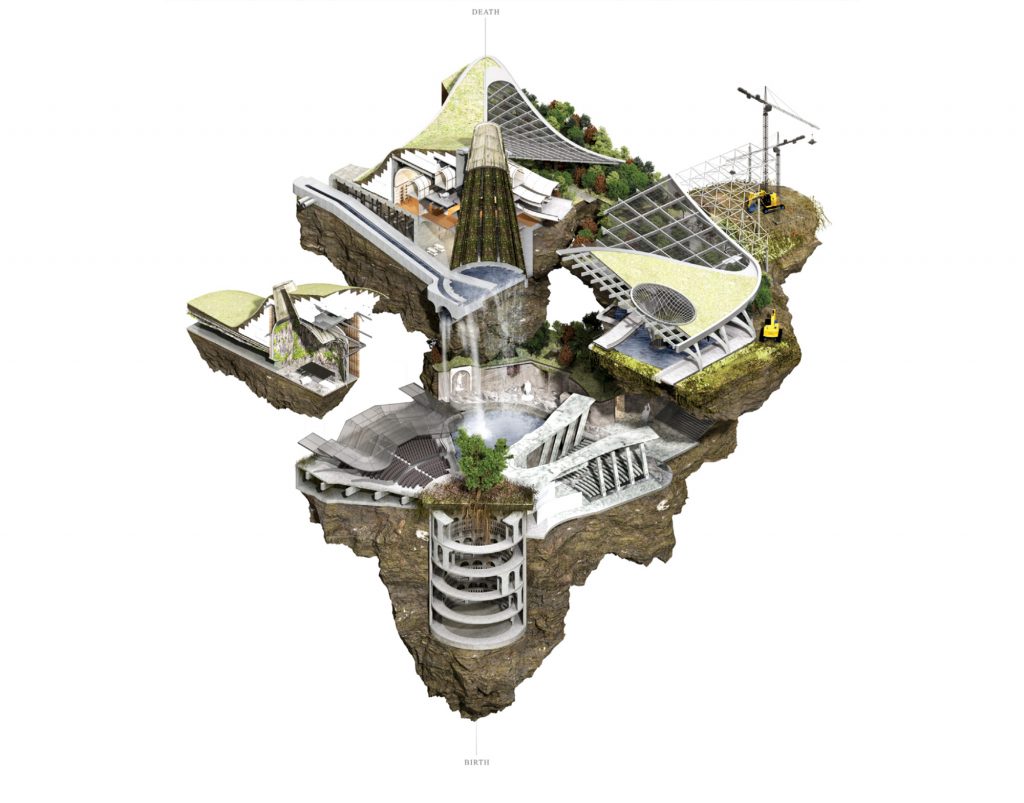The Future of Deathcare Architecture
The deathcare space, in its state of perpetual evolution, has in recent times been demonstrating increasingly-speedier advancements in the field. Technology primarily sets the standard and the pace, but there’s also startling, unguessed-at progress along novel, unexpected avenues.
Necessity is the mother of invention, and the needs of the future of deathcare have been making known for some time one of the more compelling areas of urgency in need of creative solutions: real estate. So the industry, as ever, with an intrepid ear to the ground and has employed a reliable old standby for milking the best and brightest minds of their generation for inspiration: ye olde competition, with prizes and everything.
And the Next Generation has delivered. The American educational system set about the matter in by appealing to the competitive spirit of the student body, with the objective of brainstorming inventive measures to reduce human ecological impact in death.
The result, in part, is the Seneca Growth Complex. Donors’ remains would contribute to new organic materials applied in the growth and sustenance of native natural ecology of Seneca Village and of Greater Central Park. A coup indeed, as well as an elegant, brilliant solution set one of the largest urban centers in the country, should the complex indeed come to pass; there is, as yet, no timeline on the complex’s construction, more’s the pity since we need probably half a dozen of these, like, yesterday. The die, however, has plainly been cast, and hopefully we’ll see this, and other such places, successfully manifested in other urban areas where the need for space is compelling. Similar structures have already been presented elsewhere in the world, such as the Bosques underground structure near Mexico City; but the Seneca Project stands alone in the comprehensiveness of its sustainability measures.

Masterminded during the unprecedented upheavals of COVID-19 by architecture students Dario Sabidussi and Yuxuan Xiong, University of Pennsylvania graduate students have created a paean to remembrance and ritual currently without rival. The complex is as elaborate and unique as any gothic contrivance but the ecologically-minded helix is built of renewable, low-footprint materials. Spiraling upward out of the earth, the complex includes innovations developed for the complex include biodegradable capsules that render remains to fertilizer for the structure’s arboretum and ‘The Lightbringer,” a towering element which expands and contracts during cremations (performed within the body of the comprehensive structure which appears like a sort of mall for disposition of remains. “The Lightbringer” creates a visual statement which is almost a form of living tribute, interactive and of scale, like an artistic installation.

Lightbringer’s designer, Yuxuan Xiong, says of his inspiration of the element: “At the time, we were in a very hard situation where we couldn’t have large gatherings,” Xiong says. “So we thought it would be nice to have something that’s large and can be seen from different angles, something that helps you think about the sort of memories that you want to cherish. This memorial sculpture allows people to heal.”

And in a somewhat more superficial reimagining what death care may look like post-Covid in other forward-looking endeavors include reimagination of more mundane aspect of simple interior environments in already existing structures.
Architecture on the whole is on board with the movement, recognizing the necessity for interior celebration spaces more inline with a culture of evolving contemporary mores, including pressing ecological matters and supplying death care of all levels to every aspect of society.
With the realization of innovation, influence spreads in outward ripples. And as clever, unique, and comprehensive these early ideas are, extraordinary things are sure to come, and soon.




